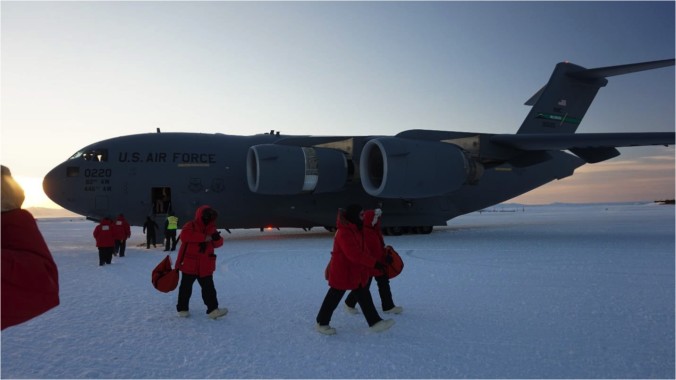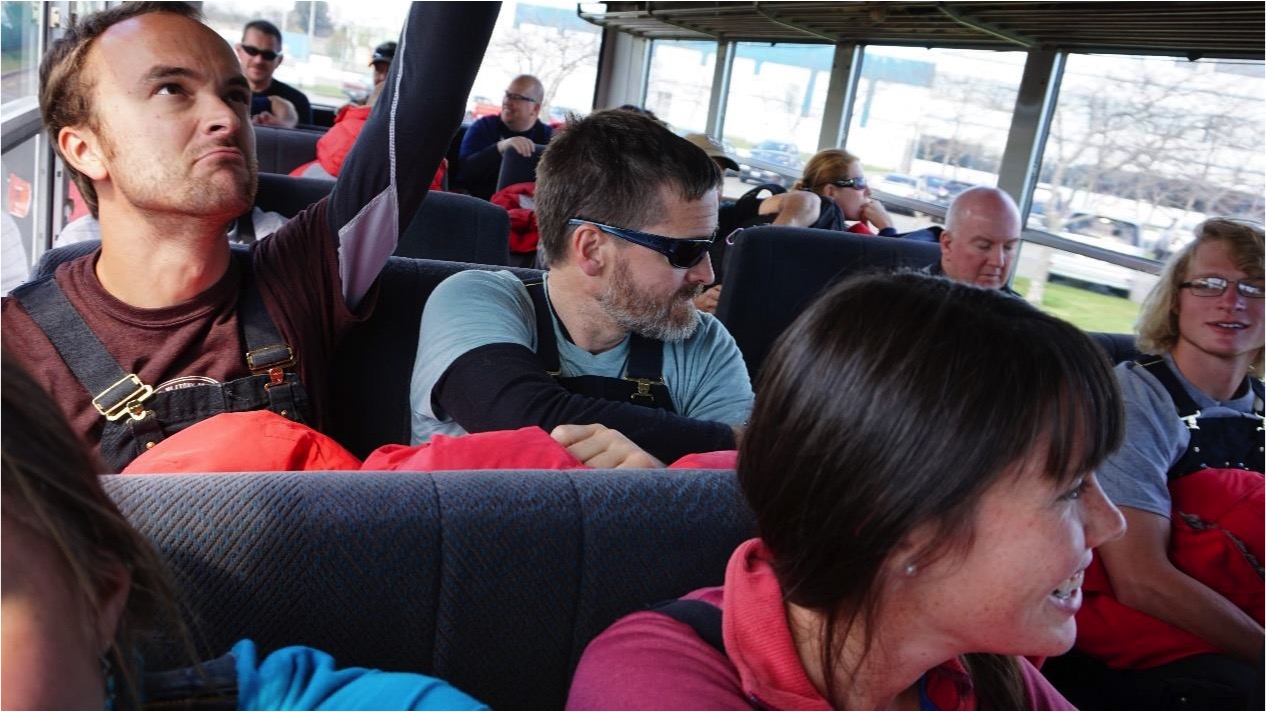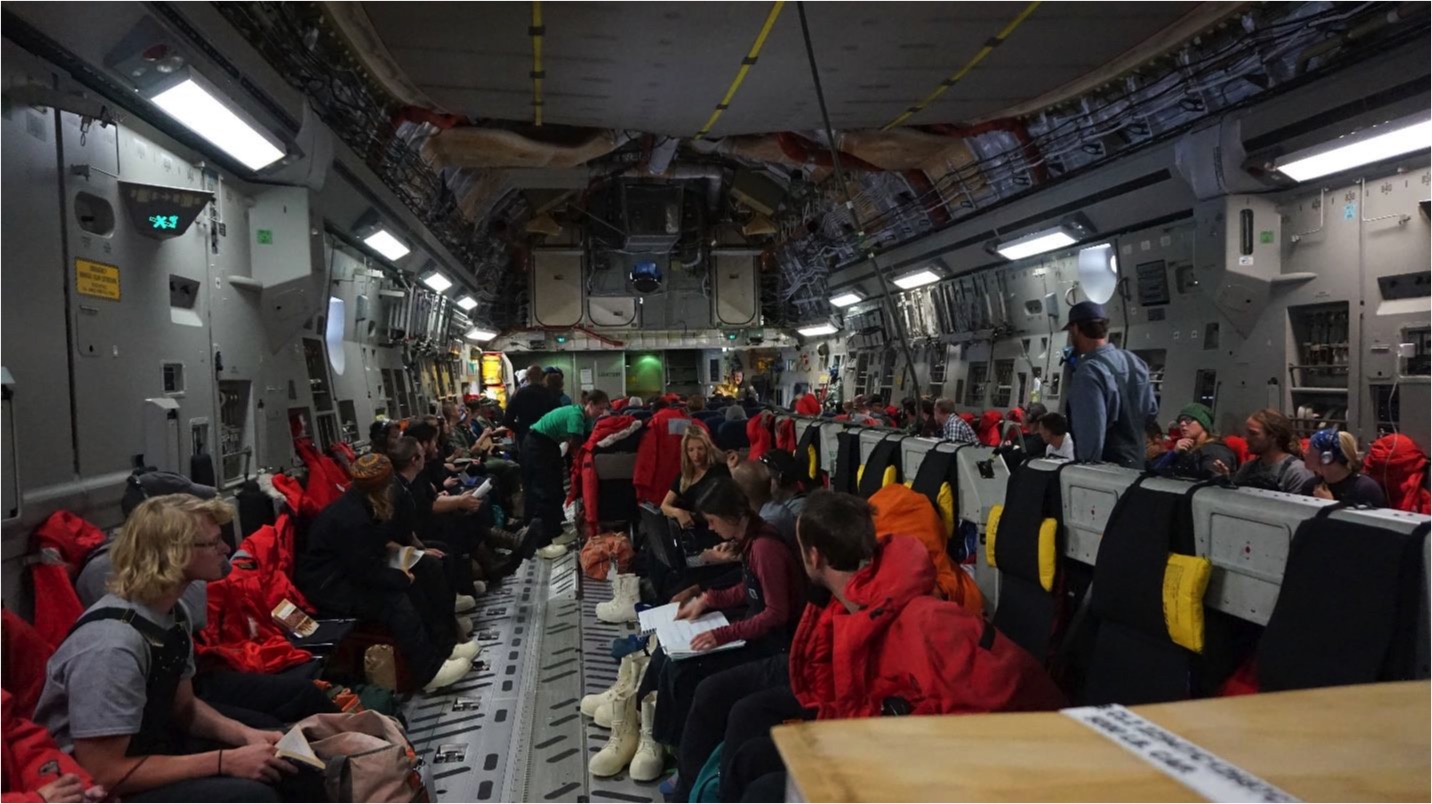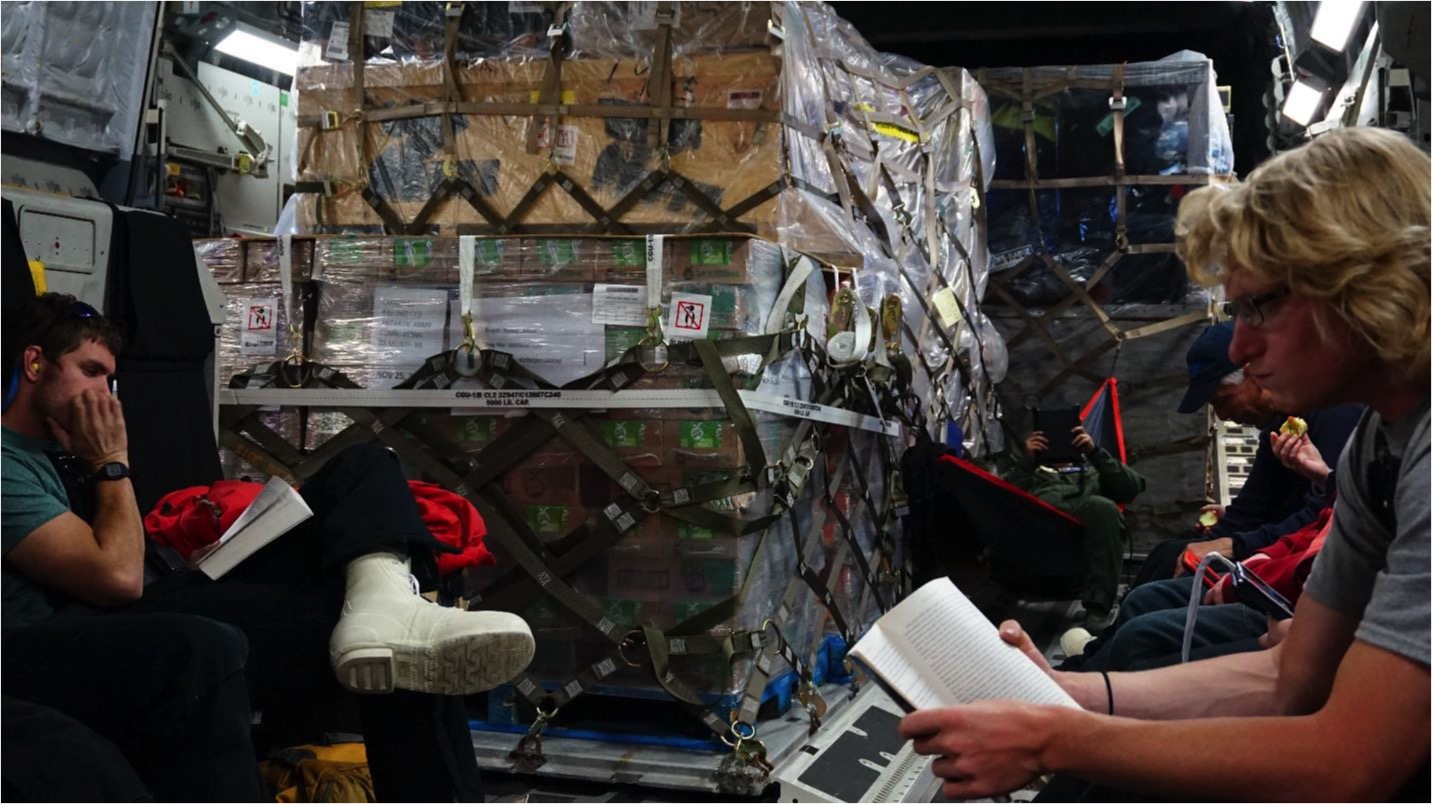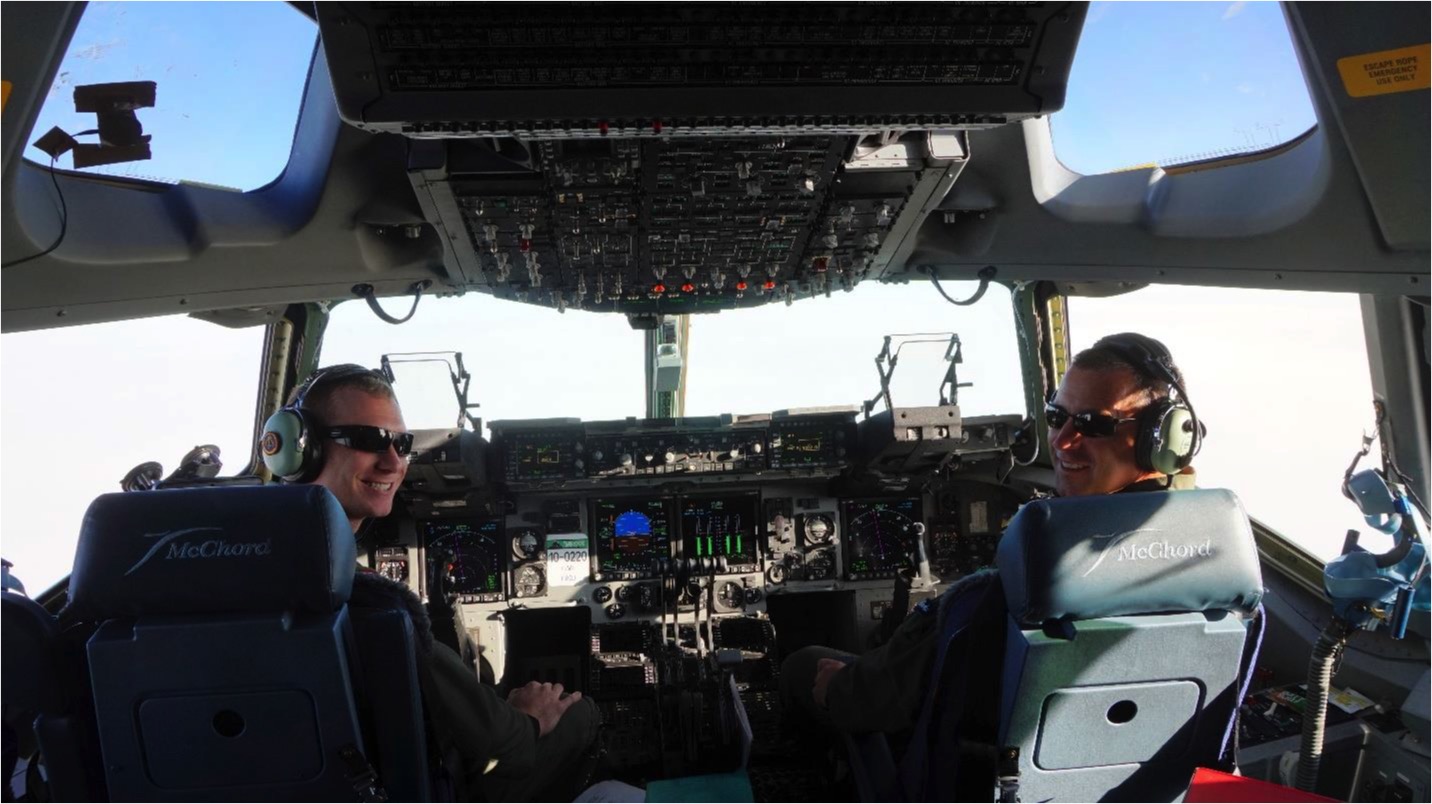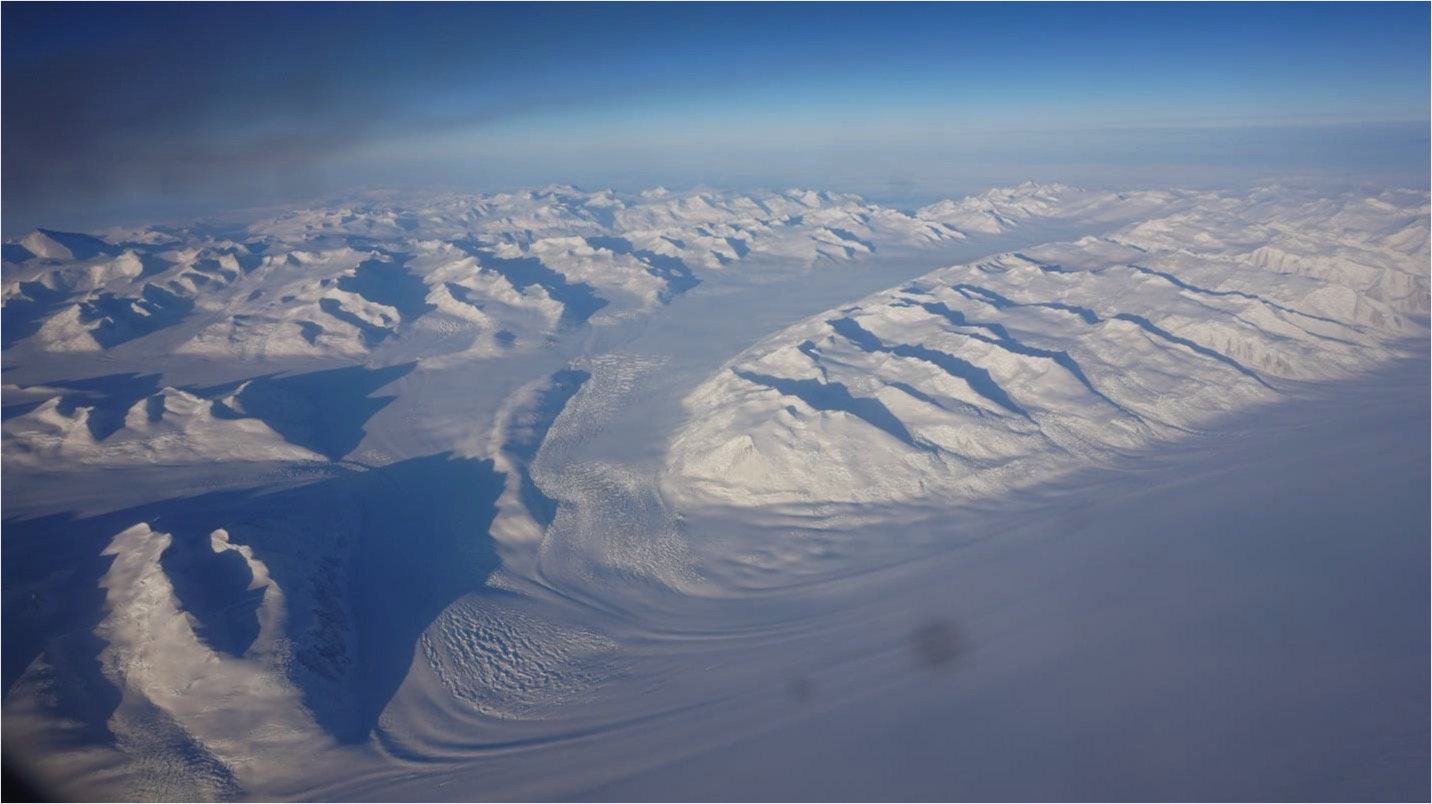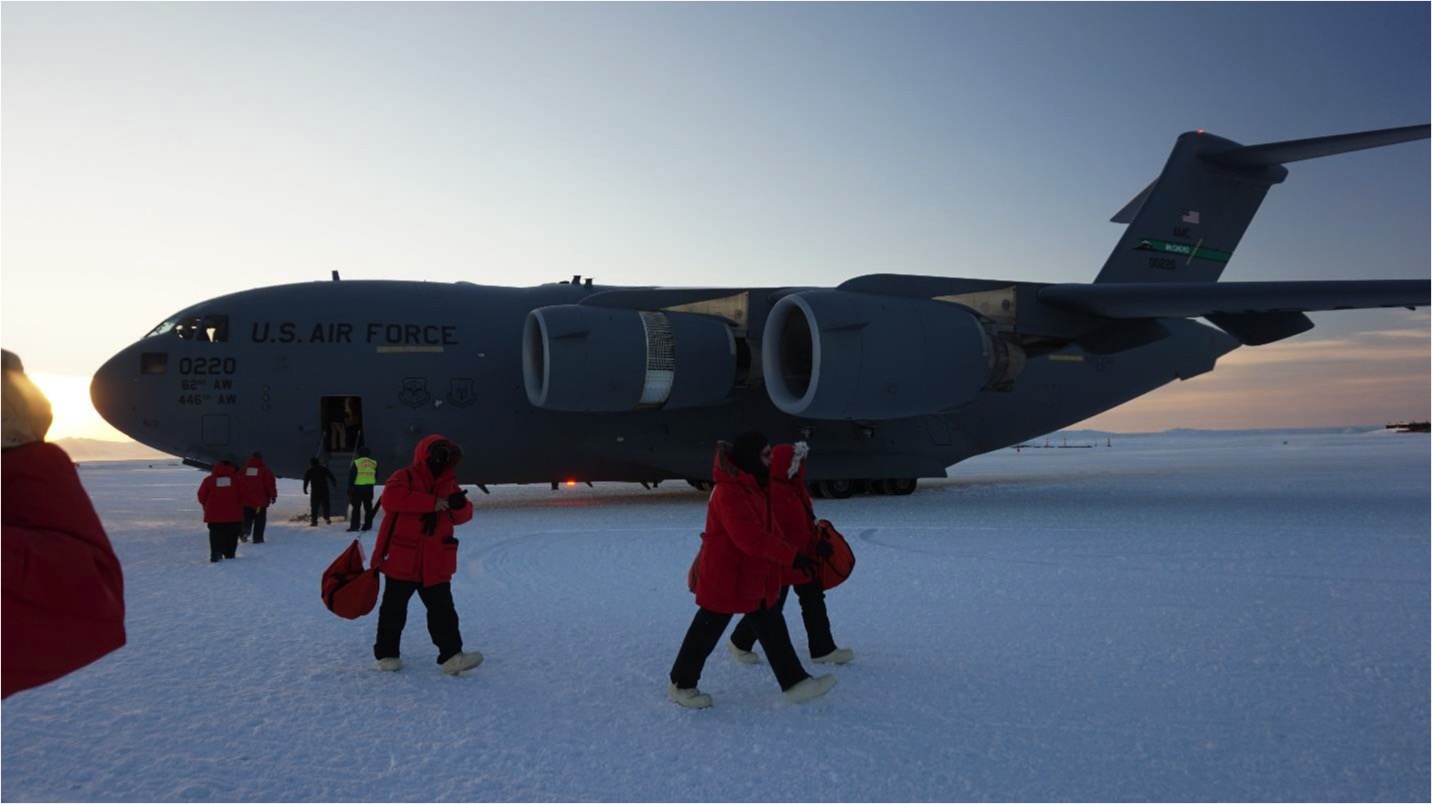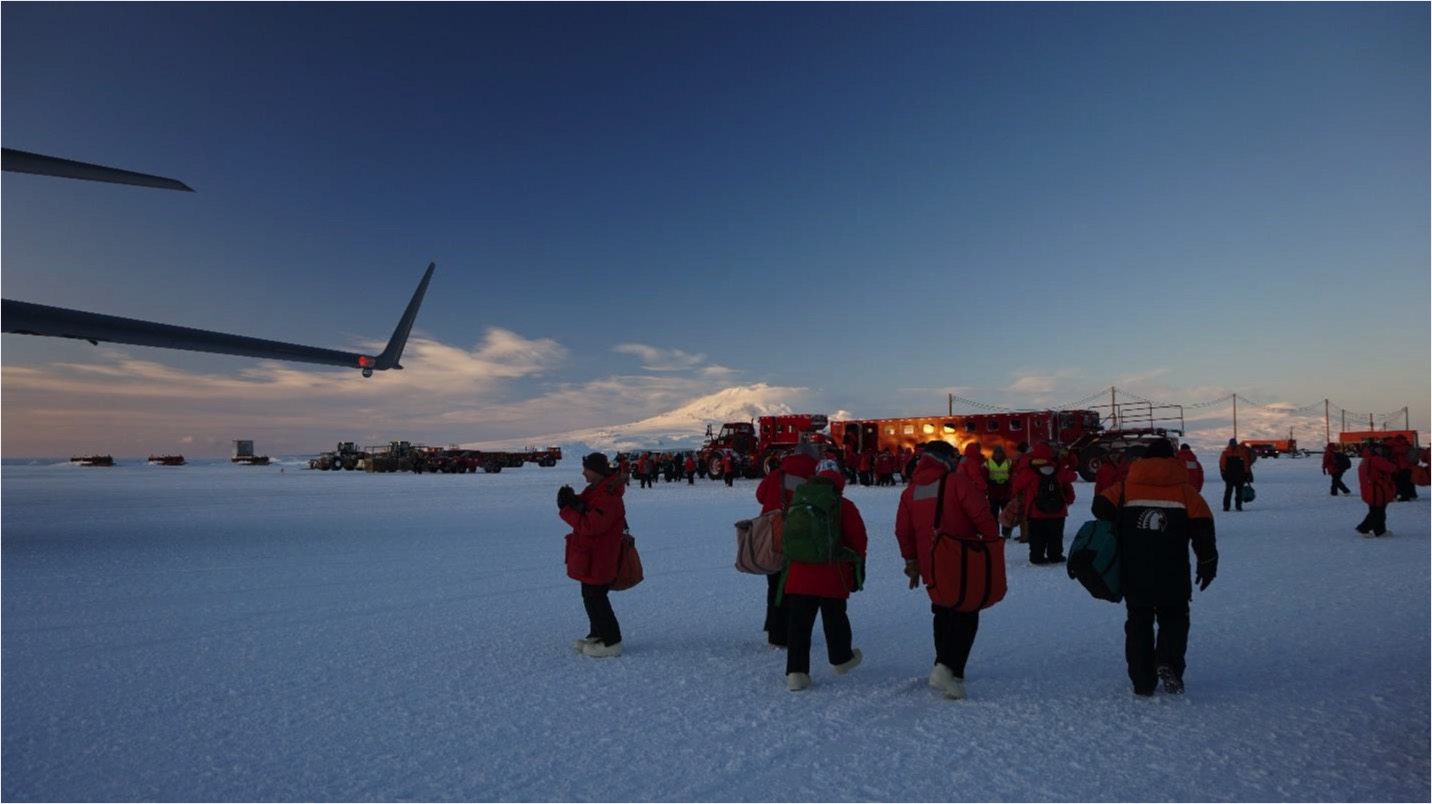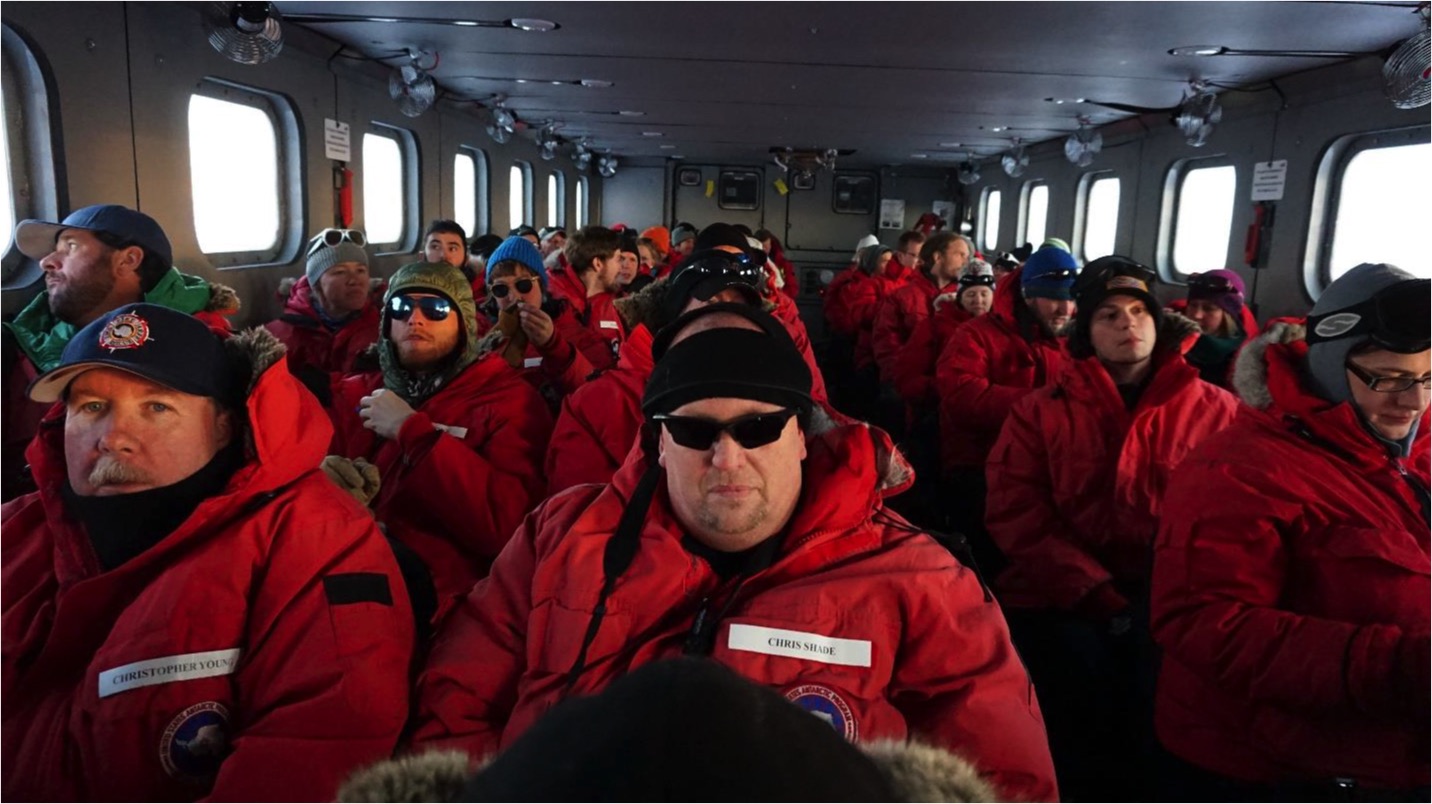The fifth post in the Antarctica: Weddell Seal Team series comes to us from Erika Nunlist.
If you haven’t yet, be sure to read the first post in this series for more background on the project and the team. You can also read the 2nd, 3rd and 4th posts if you missed them.
If you would like to help support this project, head on over to their campaign on Experiment! They only have 5 days left to reach their goal!
A typical work day
9 November 2015
The last couple weeks have been very busy, very awesome, and very fun! We had our two PI’s, Bob Garrott and Jay Rotella join us for the last 16 days. They are both professors and Montana State University and have been running this project for the last 15 years. While they were here, they worked every day out in the field with us and helped us set a new record on the number of pups tagged in the study area! We’ve now tagged around 630 pups with a few (maybe 10-20) to go. The most we tagged in a day was around 60 I believe.
While they were here, we also did our first survey of the entire study area. Our work so far has been focused on the main colonies where we know the majority of pups are born. The purpose of a survey day is to see where else the seals are in the study area and capture the distribution of the animals we generally aren’t as focused on (i.e. the single males and females). To do a survey, we drive around and make a note of every seal we see in the entire study area which has come to about 1500 animals this year (this number will continue to increase throughout the season).
I know many people are interested in exactly what we’ve been doing on a daily basis for work. So for this update I’m going to detail, step by step, a typical day as best I can. I must admit, I haven’t been great about pictures so many of the work photos in particular were taken by Ross Hinderer. Thanks Ross!
Our day begins in the gear hut where we keep and dry out all our seal covered gear.
Every morning we have to pack up our tools and organize them in our tagging harnesses. In each tagging harness we have two tagging pliers, a pair of nippers, a genetic sampler, a hole punch, a third tagging plier, and a brush. We also have our data book, field computer, several strands of tags, and vials to hold our genetic samples.
Tools in the tagging harness. One person will often wear this all day and have easy access to the tools.
In a separate pack we also pack materials to weigh our pups. This includes a scale and weigh bag (specialized duffel bag designed by Bob) which come in three sizes to use as the pups grow. The scale connects to the weigh bar and also to the weigh bag. Two people then stand on opposite sides of the bar and lift the pup together. We weigh pups at parturition, 20 days old, and 35 days old. Pups are born at about 60-80 pounds and can gain 2-6 pounds a day. We’ve started weighing 20 day old pups recently and they seem to average around 140-170 pounds. The heaviest 20 day pup so far has been 208 pounds. Building some good leg muscles! Can’t wait for those 35-dayers!
Additional gear we bring each day is photo bars (I’ll explain later), lunch stuff (ramen, hot water, cocoa, tea, etc.), a handful of flags, and survival bags (the red water proof bag – mandatory to have enough survival gear for each person).
When we’ve gotten all our gear together in the huts, we have to uncover our sleds, load all the gear onto the sleds, start our sleds, gear ourselves up, put on helmets and finally take off. Writing it all out makes me realize actually how much work we have to do every morning before actually going to work. With our whole crew working on it though, it really goes pretty quickly. This is a photo of penguins hanging out watching us get ready one morning. There were completely unaffected by all the hustle and bustle.
Once we get to a colony, we usually split up into groups and start working up the colony. Each group usually has their own set of tagging, weighing, and photo gear. We then go to every seal in the colony to check if there’s a pup that needs tagging or weighing. This is the normal looking scene at one of our colonies. You can see about how seals are distributed throughout the colony and another group working up seals in the background. These seals are all here because of sea ice cracks that allow them to get in and out of the water from holes they rake out with their teeth. Most of these cracks are very obvious and easy to cross but if they aren’t we have probing poles we take with us to help navigate.
Exploring part of our study area with the probing poles. This is an area with many cracks covered in snow that we don’t go to often because there really aren’t more than a handful of seals.
When we do find a mom and newborn pup it looks something like this. In this picture, Mike and I had walked up to this mom and pup pair, noticed the pup did not have tags yet so we copied down the mom’s tags and retreated to get the tagging stuff ready. At this point, we prepare two sets of tags (one pair for each flipper), write down the mom and pup information in our book, and get the weighing stuff ready. An important note, not every single of the 600-odd pups this year were weighed. That would be a ton of work. Instead, we enrolled certain pups in this particular part of the study depending on the mom’s age and history in the project. In the end, we enrolled about 180 pups in the weigh study each of which will ideally be weighed three times. Most of those pups were also enrolled in the swim study which just means we’ll take the temp tag (also explained later) off of them when we’ve weighed them for the last time. Photo by Ross.
A closer view of me writing down information in the tagging book. I’ve gotten pretty good at writing with gloves on! It’s not easy and my writing I fear is not always 100% legible. On warmer days I wear thinner gloves which makes it a little easier to write. As for entering the data into the computer, we use the butt end of a pencil which works great. After recording the necessary info, we walk up to the seal pup and tag, weigh, sex, and genetic sample the pup. There are several ways to do this and it often depends on the temperament of the mom. Some mom’s really don’t care about your presence and a single person can go up and tag the seal pup all by themselves. Other times the mom really does care and can be quite aggressive. In these instances, two or three people work together to get the pup tagged. One person tags while the other two either help drag the seal pup a short distance away or distract mom or both. Photo by Ross.
An example of a very peaceful mom and pup pair.
We always tag the outer webs on each flipper and the end product looks something like this. Sometimes we also will put a temporary third temperature recording tag in one of the inner webs. Next photo.
We call the temperature recoding tags ‘temp tags.’ The pups will wear them for about 35 days before we take them off again. The idea behind these tags is that air temperature and water temperature are different so by looking at the temperature record logged in these small devices, you can see that difference and figure out how much time pups spend in the water.
In this photo, you can kind of see the two blue normal tags and the yellow temp tag. This is a fun photo because it’s a pup that has actually been swimming. You can tell it’s freshly wet and the mom is still in the water. Photo by Ross.
Beside weighing and tagging, the last integral part of our day to day work is doing photo projects on moms with pups that we’ve chosen to weigh. A photo project entails setting up six bars (like I’m doing in the photo) evenly around the seal mom and taking photos from 8 different angles with the seal and bars in the frame. The photos are then put into a program (by Kaitlin) that can calculate the volume of the seal by referencing the bars (which are a meter long and different colors every 20 cm) and then the weight can be derived using a standard density. This may sound easy enough to do, but it is one of the hardest parts of the job. We have to make sure the seal mom stays still (very hard when she wants to watch you) and take good photos with cold hands, blowing winds, a moving pup, etc. It’s not thaaatttt hard but can be very frustrating. Photo by Ross.
So why do a photo project? This is a relatively new aspect of the project and it’s an attempt to get at how much these mom’s weigh without actually having to weigh them on a scale. We do have a weigh sled (photo) that we can weigh mom’s on, but it can’t go to all our colonies (because of rough ice) and mom’s are often very hard to coax onto the sled (we use their pups at motivation to get on the sled). We did weigh about 30 moms on the sled this year, but we got maybe 70 photo projects. So if the photo projects do work, you can see just in numbers that it would be potentially a better option. Of the mom’s we got on the sled, weights ranged from roughly 900-1100 pounds.
At the end of each day, we refuel our sleds, unpack all our gear, and cover our sleds. We fuel our sleds with a premixed fuel that is 50 gallons of gas and 5 gallons of oil per barrel. Antarctica primarily runs on fuel (some solar too) but if you calculate in the amount of effort and resources it takes to get the fuel here, fuel works out to be about $34.00 a gallon. We go through a barrel about every 5 days.
And that’s it for this this update. I have another one coming very shortly because I actually split this one in half. Hope you enjoyed and hopefully it wasn’t too much writing. The next one will be many more pictures and a lot less writing… I think.
Again, feel free to share with others and send me an email if you want me to add you to my list.
-Erika
Thanks for reading!
Stay tuned for the sixth post in the series, coming tomorrow!
If you would like to help support this project, head on over to their campaign on Experiment! They only have 5 days left to reach their goal!
Share this:






























































